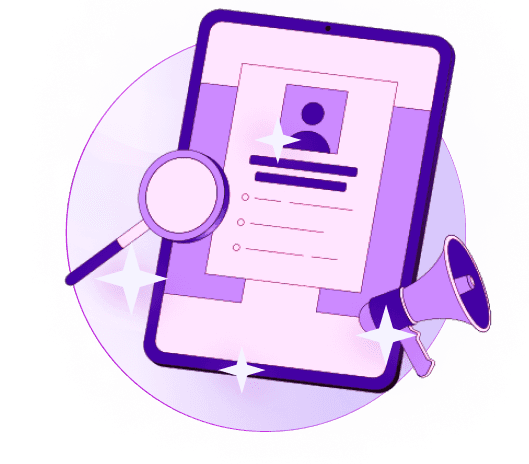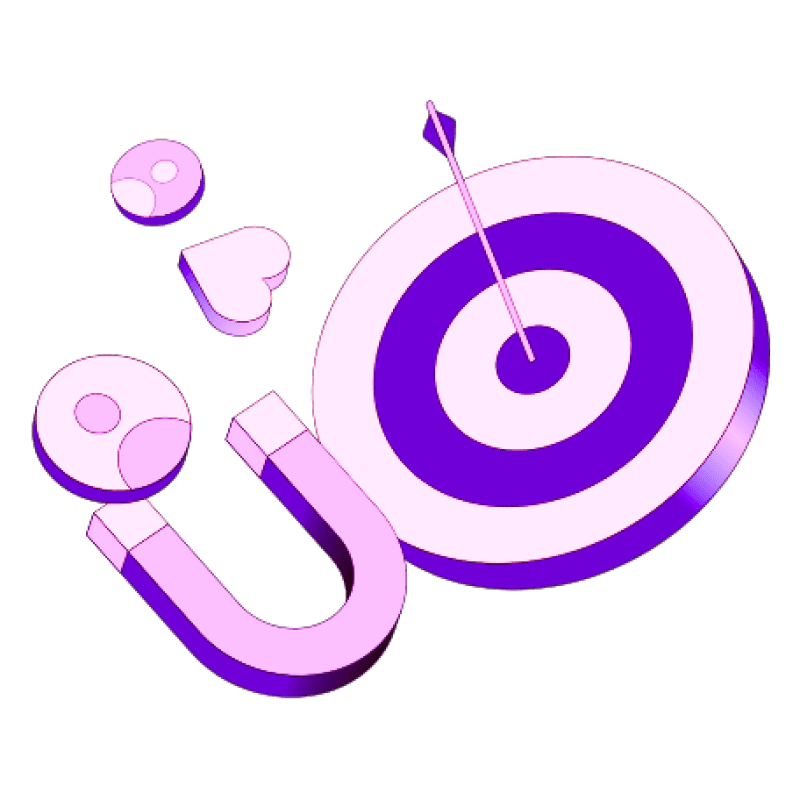Blogs
Articles

Waterfall Enrichment for Lead Generation: Boost Accuracy & Coverage
The numbers are shocking - more than half of B2B contact information is wrong or outdated. Your outreach efforts to potential customers might be going nowhere because the data you have is not reliable.
Sales teams that utilize enriched data don't just get better open rates - they achieve a 50% boost in their win rates per employee.
This piece will show you how waterfall enrichment works, its importance, and the steps to implement it to power up your lead generation strategy.
What is waterfall enrichment for lead generation?
Waterfall enrichment reshapes how businesses get and verify lead information. This approach works through a sequential search process that connects to multiple data vendors one after another until valid contact details emerge.
Picture fishing with several nets instead of one. The system asks the first provider for email or phone information. When nothing valid shows up, it triggers the second provider automatically. This cascade continues through all integrated sources to ensure maximum data coverage.
This approach is vital for B2B companies, SaaS providers, and growth-focused marketing teams to improve segmentation, personalization, and outreach. The sequential nature offers a reliable alternative to single-source enrichment. Single sources often create data gaps that damage your sales pipeline.
The process follows a structured flow:
Start with your primary data provider
If gaps remain, move to a secondary provider
Continue this sequence until data is complete or all sources are exhausted
Why Incomplete Data Hurts Lead Generation
Sales and marketing teams face a huge challenge with incomplete data. Recent studies show 43% of salespeople need better quality data to cold prospect effectively. The data problem runs deeper - 45% of SDRs struggle most with incomplete information.
Impact on email deliverability and call success
Bad contact data ruins outreach results. About 9% of webform emails turn out invalid, which means one in every 10 leads is either fake, mistyped, or impossible to reach. This hits revenue hard - 64.6% of companies say email deliverability problems directly hurt their revenue and customer retention.
Phone outreach success depends on accurate contact details. Sales teams get much better answer rates from cell phones than landlines. On top of that, 54% of B2B tech buyers actually like getting cold calls. These advantages disappear with wrong contact information.
How outdated data leads to missed opportunities
Data becomes stale at 2.1% each month, adding up to 22.5% yearly. Companies miss vital buying signals because of outdated information - things like new executive hires, funding rounds, and changes in buying teams. Slow reactions to these signals let competitors grab opportunities first.
Sales teams waste 27.3% of their time dealing with bad contact data. This time could go toward building relationships with qualified prospects instead.
The cost of poor data quality in sales waterfall
The numbers are shocking - poor data quality costs U.S. businesses over $611 billion every year. Each organization loses around $12.9 million annually. Companies typically see 12% less revenue due to wrong data, which hurts every stage of their sales process.
Bad data does more than just waste money. Sales teams chasing dead-end leads lose motivation and trust in marketing's efforts. Their effectiveness drops as they deal with unreliable information.
What is Waterfall Enrichment and How It Works?
Waterfall enrichment works as a cascading system of data verification that maximizes contact information accuracy. The name comes from how data flows through multiple vendors one after another, like water flowing down steps.
Definition and core concept
Waterfall enrichment is a data enrichment process that uses multiple data providers in sequence to maximize the chance of finding accurate contact information for prospects. This approach differs from traditional single-source methods because it asks several providers one after another until it finds valid information or exhausts all sources. The system checks with the first vendor and moves automatically to the next one in line when unsuccessful.
Step-by-step process of data waterfall
The waterfall process follows a natural sequence:
Input collection: Start with simple prospect information (name, company, domain, or LinkedIn profile)
First attempt: System checks your primary data vendor for contact details
Cascade effect: The second provider activates if information remains incomplete
Continuation: The process moves through all integrated vendors (up to 20 different sources)
Completion: Everything stops once valid information appears or all options run out
Waterfall infographic: visualizing the flow
The visualization looks just like falling water, and data flows naturally from one level to the next. Each provider serves as a separate tier in the cascade. This sequential setup will give higher match rates—typically jumping from around 60% with single providers to over 80% with the waterfall approach. This method changes what used to be a tedious, expensive process into the quickest way to get complete contact data.
Benefits of Waterfall Enrichment for Lead Enrichment
Waterfall enrichment delivers measurable results that showcase its real value. Companies that use this approach see remarkable improvements throughout their lead generation funnel.
Improved data accuracy and match rates
Match rates for critical contact information shoot up with waterfall enrichment. Standard enrichment with one provider gets you nowhere near the results - typically 50-60% match rates. The waterfall approach pushes these numbers to 80% or higher. Some systems reach match rates of 93%, especially when you have multiple specialized providers working together. Multiple quality checks through sequential verification will give a solid foundation for reliable outreach.
Reduced bounce rates and better targeting
Companies see far fewer bounced emails and failed calls with verified contact information. This hits the bottom line directly - companies say email delivery problems have cost them big in revenue and customer retention. The enriched data helps create precise audience segments. Marketing teams can now build accurate audience groups based on job titles, company sizes, and buyer intent signals. This helps deliver messages that strike a chord with specific needs and roles.
Higher conversion and meeting rates
Enriched data changes conversion metrics completely. Studies show companies that make use of enriched data get up to 12% higher conversions and create 44% more Sales Qualified Leads. These benefits flow through the entire sales process. Teams qualify and prioritize leads better, which speeds up follow-up and shortens sales cycles. Sales teams spend more time with qualified prospects and less time researching, making their outreach more effective.
Better CRM hygiene and segmentation
Each stage of waterfall enrichment filters out duplicate or conflicting records while keeping the database clean. Redundancies get filtered out at each waterfall stage. Your CRM system stays current with the most accurate information. This clean foundation supports immediate updates and creates what experts call a "self-healing" CRM that spots and fixes data issues before they hurt sales performance. This ended up enabling smarter segmentation and more customized outreach.
Top Waterfall Enrichment Tools to Try in 2025
Several powerful platforms will dominate waterfall enrichment strategies by 2025. Each platform uses unique approaches to maximize data coverage through multi-provider sequencing.
Clay

Clay dominates the market by connecting to over 75 data providers through its sophisticated waterfall system. The platform's email waterfall finds and verifies contact information using services like ZeroBounce. Credits get refunded when providers return no results as the sequential enrichment process moves automatically to the next provider. This approach typically triples users' data coverage and quality. The platform starts with budget-friendly providers and moves to expensive ones only when needed, which optimizes costs without compromising quality.
Persana AI

Persana AI stands out with its ability to blend across 50+ databases for accurate email and phone contact information. Teams looking for affordable enrichment solutions benefit from the platform's simple "pay only for new emails" pricing model. The platform's autopilot feature creates optimized workflows to find and connect with prospects.
Pre-built playbooks eliminate the usual learning curve that comes with complex data tools. Teams who find Clay's interface difficult can use Persana as a simpler alternative with powerful enrichment features.
BetterContact

BetterContact combines 20+ data sources to find and verify mobile phone numbers and email addresses. The system requests data from multiple providers until it finds a successful match and uses a 4-layer validation process to ensure accuracy. Users pay only for valid data after testing. The platform complies with privacy regulations like GDPR/CCPA and processes over 150,000 data enrichments daily for more than 1,000 companies. BetterContact helps users reach prospects that competitors can't access, which creates unique sales opportunities.
Conclusion
Waterfall enrichment has changed how businesses handle incomplete lead data. This piece shows how sequential enrichment boosts match rates from 50-60% to 80% or higher. Sales teams can now spend more time with genuine prospects instead of chasing invalid contacts.
Poor data costs companies about 12% of their yearly revenue. Good data enrichment, on the other hand, increases conversions by 12%. A strong waterfall enrichment strategy does more than improve technical aspects—it directly drives revenue growth.
Tools like Clay, BetterContact, and Persana AI have made this approach available to companies of every size.
You can check out the detailed waterfall enrichment features at Persana to improve your prospect data quality and quicken your lead generation right away.
Companies once had to choose between costly detailed data or cheap incomplete information. The systematic approach of waterfall enrichment now gives you both—full coverage at the best price. Your sales team needs the most accurate data to connect with real prospects.
Data decays at 2.1% every month—that's a fact. Waterfall enrichment works as an ongoing strategy to keep data clean, not just a one-time fix. Companies that stick to this approach will without doubt see better email delivery, higher response rates, and stronger conversions throughout their sales pipeline.
Key Takeaways
Waterfall enrichment transforms lead generation by systematically querying multiple data providers in sequence, dramatically improving data accuracy and sales outcomes.
• Waterfall enrichment boosts match rates from 50-60% to 80%+ by cascading through multiple data sources until complete contact information is found.
• Poor data quality costs businesses $611 billion annually - incomplete leads waste 27.3% of sales reps' time and reduce revenue by 12%.
• Sequential enrichment delivers 12% higher conversions and 44% more qualified leads by ensuring accurate contact information and better targeting.
• Modern tools like Clay, Persana AI, and BetterContact automate the entire waterfall process, making multi-provider enrichment accessible and cost-effective.
• Data decays at 2.1% monthly, making waterfall enrichment essential for maintaining CRM hygiene and preventing missed opportunities from outdated information.

Create Your Free Persana Account Today
Join 5000+ GTM leaders who are using Persana for their outbound needs.
How Persana increases your sales results
One of the most effective ways to ensure sales cycle consistency is by using AI-driven automation. A solution like Persana, and its AI SDR - Nia, helps you streamline significant parts of your sales process, including prospecting, outreach personalization, and follow-up.



